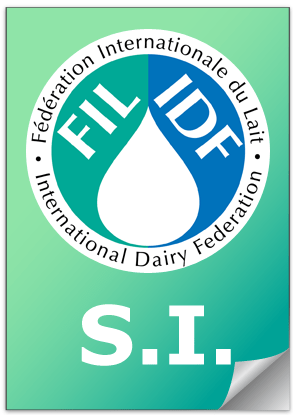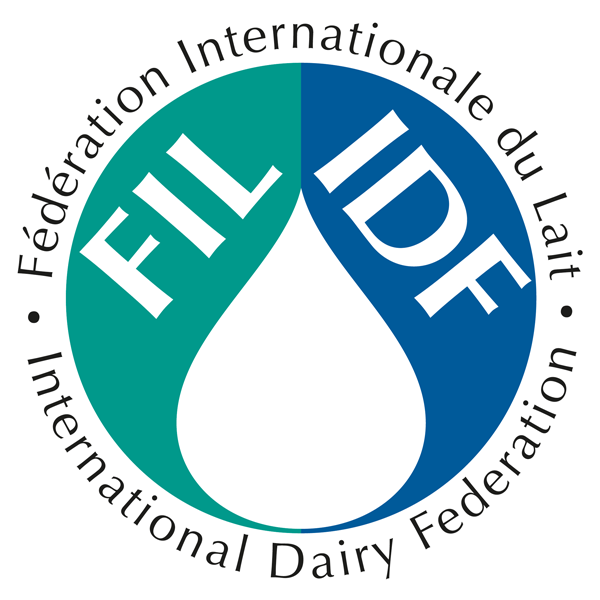Special Issue 9501 - Heat-induced changes in milk
Couldn't load pickup availability
Document info
| pages | 455 |
|---|---|
| published date | 24 March 1995 |
| reference | Special Issue 9501 |
Publication description
Second edition (Revision of Bulletin 238/1989)
Edited by P.F. Fox (Ireland) - Twenty chapters compiled by Group F17 of IDF
Chapter 1: Heating methods have been developed which retain as many as possible of the good organoleptic and nutritive properties of raw milk during heat treatment. Heating processes – pasteurization, thermization, sterilization – and equipment – systems for milk pasteurization, UHT-heating systems, sterilization in the package – are examined.
Chapter 2: A general survey on the thermodynamics and kinetics of reactions, and how to make practical use of such information is presented. The effect of temperature is discussed using the Arrhenius equation and the Eyring equation; it is stressed that the Eyring equation should be used for protein denaturation. Examples of reactions that occur in milk are given as illustration.
Chapter 3: This chapter first discusses heat-induced chemical changes, which are mainly due to reactions of fatty acid residues. The physical changes considered are coalescence, creaming, disruption and aggregation.
Chapter 4: Although protein denaturation of whey protein can be induced by a variety of agents, thermal denaturation is of greatest industrial significance. Methods used to evaluate the thermal denaturation of whey protein and the thermodynamics and kinetics of such a reaction are examined. The effects of industrial heat treatments on whey proteins in dairy systems and alternative treatments to avoid whey protein denaturation are discussed.
Chapter 5: A review is given of current knowledge of the principal changes induced in casein on heating over the temperature range 0-150°C. The interactions of casein and whey protein on heating mixtures of purified proteins or skim milk are described. The significance of these interactions in the heat coagulation of milk, particularly the occurrence of a maximum and a minimum in the heat coagulation time-pH profile, is discussed briefly.
Chapter 6: The basic physical chemistry of the milk salt system, as presently understood, is considered, particularly in relation to phase separation of calcium phosphate and the interaction with casein. Application of the phase rule to milk allows the phases and phase boundaries to be more clearly defined. Theories of crystal nucleation, growth and inhibition are used to explain the strong interaction of casein with calcium phosphate and the very marked, but almost totally reversible dependence of the partition of milk salts on temperature. The possible importance of an open and flexible (rheomorphic) conformation for the caseins in initiating and limiting phase separation of calcium phosphate from milk during heat treatments is discussed.
Chapter 7: The heat-induced changes in lactose – isomerization, degradation, Maillard browning – are discussed. Milk products are among the most sensitive of foods to the effects of thermally induced non-enzymatic sugar degradation reactions. Maillard browning reactions involving lactose and milk proteins are particularly favoured because of the high concentrations of lactose and lysine-rich proteins in many dairy products. Products of the heat-induced changes in lactose are useful indicators of thermal history.
Chapter 8: The effect of severe heat treatment on rennet coagulation and treatments such as pH adjustment, addition of CaCl2 and acidification and reneutralization, for improving the coagulability of heated milks are discussed. Implications of severe heat treatments of milk for cheesemaking are looked at.
Chapter 9: An overview is given of the effect of thermal processing on the coagulability of milk by acid. It is shown that thermal treatment of the milk mix is an essential part of the processing in the production of products such as yoghurts, fresh cheeses and other milk gels that involve coagulation of milk protein by acid.
Chapter 10: The compositional factors which affect the heat stability of milk – pH, minerals, lactose, urea, proteins, lipids – are examined.Processing factors affecting heat stability – forewarming, addition of mineral salt, homogenization - are considered.
Chapter 11: The stability during storage of sterilized milk, concentrated milk, and other long-life liquid dairy products that deteriorate by physical and/or chemical changes is covered. Changes during storage are discussed after a short discussion about the products immediately after manufacture. Attention is given to changes in the partition of calcium, magnesium, phosphate, and citrate between serum and colloidal particles, association and dissociation of proteins from the casein micelles, covalent cross-linking of proteins, proteolysis, and lipolysis. Finally, physical stability – sedimentation, creaming, and gelation – is considered. Models for age-gelation in various products are given.
Chapter 12: This chapter provides a general survey of the heat stability of concentrated milk, with emphasis on developments that have occurred during the last two decades. The main topics covered are: factors affecting heat stability, heat-induced changes during sterilization, possible mechanisms of heat coagulation in concentrated milk.
Chapter 13: This review reports on studies on the nutrient content of pasteurized and UHT-treated milk both after processing and during storage.
Chapter 14: The concept of flavour is defined, followed by an outline of the mechanisms by which it is perceived and of the methods of research available for determining the substances responsible. The origins of these substances are briefly considered. The effects produced by UHT processing are described in detail.
Chapter 15: The different flavours which appear in UHT-treated milk through processing and during storage, as well as the contributing compounds and their origins, are summarized.
Chapter 16: This review focuses on the influence of various heat treatments of milk on the activities of some indigenous milk enzymes. The technological significance of thermal denaturation of the enzymes is also discussed.
Chapter 17: A review is given of the general factors affecting the heat stability of bacterial enzymes, possibility for inactivation of proteinases and lipases from pseudomonads by low temperature treatment, heat stability of phosphatases from psychrotrophs, proteinases and aminopeptidases from lactic acid bacteria, and heat stability of microbial ß-galactosidases.
Chapter 18: The problem of fouling associated with milk processing is discussed, including factors which affect fouling, composition of the milk fouling deposit, protein thermal stability and fouling, initial stages of fouling and the interaction between fluid mechanics and chemistry in fouling. The cleaning of deposits is examined, and approaches to reduce or eliminate fouling are suggested.
Chapter 19: Ribonucleosides as minor milk constituents are examined. The heat-induced formation of N6-methyladenosine in milk by Dimrothrearrangement of N1-methyladenosine and related kinetic data are discussed. A pilot plant for indirect milk heating is described.
Chapter 20: This chapter discusses the general principles of available indices and describes available indices related to two types of chemical reactions used to assess heat treatments in the dairy field: (1) the degradation, denaturation and inactivation of heat-labile components, and (2) the formation of “new” substances which are not present, or only at trace levels, in the unprocessed product. Examples are given of combinations of indices, which can be helpful when characterization of different products or of different heat-classes of the same product cannot be achieved by one index alone.
Available in the format of a photocopy


